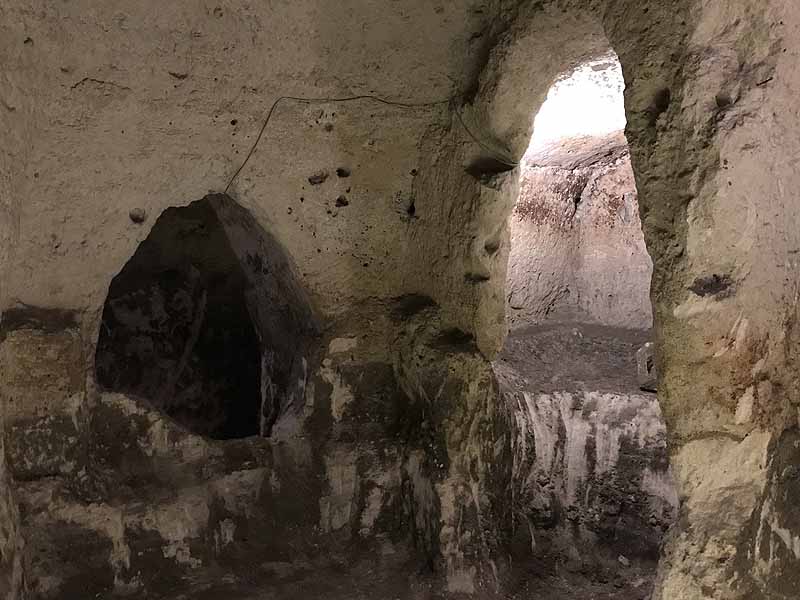3 Aug,2018 By Jagabond
Matera was not long ago considered the shame of Italy. People lived in caves with livestock and dressed in raggedy clothing. The main source for drinking was rainwater and melted snow. Seven decades later Matera earned the 2019 European Capital of Culture. What an amazing turnaround.
The history of Matera extends back to the Paleolithic period. There was a long time of affluence in part due to agriculture and the wool industry, but the 17th century saw the city in decline. By the middle of the 20th century it was a forgotten place. When the Italian government rediscovered Matera and its stark poverty they took action, moving people from the caves into new housing developments. UNESCO now preserves these previous cave dwellings, known as Sassi, as world heritage sites.
Matera made headlines when Mel Gibson chose it for the setting of Jerusalem in ‘Passion of the Christ’. Since then tourism has exploded. I recently spent two days in Matera, and present the photos below to walk you through this incredible city that resembles times past.
A photo gallery of Matera should start with a view of the Sassi. Here you can see a nice shot at dusk, with the cathedral tower most prominent in the upper right corner.
Here is a closer view of the homes in the Sassi. It looks almost like an irregular or random stacking of buildings.

The previous homes within the caves are on display at Materasum Ipogeo. The best description of how people lived comes from Levi’s novel Christ Stopped at Eboli. The quote is a bit long, but very vivid.
“It is a black hole, lit by oil lamps. They dug caves into the hardened clay walls of the ravine. The streets, for those who exit their house by door are the roofs for those who live below. The doors were open because of the heat. I looked through and I saw the inside of a grotesque house that receives no light or air except that of from the open door. In some houses you can’t even get that because you must enter from above, through hatches and ladders. Inside those black holes on earth, I saw the beds, the poor furnishings, their ragged clothes. On the floor lay dogs, sheep, goats, pigs. Every family has in general one of these houses per household and they are sleeping all together, men, women, children, animals. There was an infinite number of children naked or covered in rags.”


After a few days in Matera it became obvious why they filmed a religious movie here. You could spend hours wandering around churches. The most unique was Madonna de Idris, a church carved out from the rock.
The Matera Cathedral is from the 13th century, but was only recently reopened for services. I loved the fresco of the last judgement.
Any church with ‘purgatory’ in the name is bound to be dark. The vibe is set early on, with skulls greeting you at the front entrance.
I like simple altar presentations, like the one at San Giovanni Battista. One stained glass window, and a hanging cross that casts a shadow on the wall.
Speaking of simple, the tiny Chiesa di Santa Chiara can be missed if you blink at the wrong time.
In Matera nativity scenes are not just for Christmas. Chiesa San Pietro Caveoso had a very nice modern display.

The MUSMA Museum of Contemporary Sculpture is well worth the cheap entrance fee. Set on two levels, you can easily spend an hour here. The highlight for me was by the sculptor Saverio Todaro. A classic representation of what went wrong in the Garden of Eden – Adam with the snake and Eve holding an apple.


If you’re there in the summer like I was, bring lots of water to avoid passing out from the heat. Making it more difficult is the city layout. There were steps everywhere!
There’s nothing like walking through an archway in an ancient city.
For some reason I really loved this shot. I don’t take too many pictures of doors, but I thought the flaking green paint gave this one a special look.
Because of the hot weather there weren’t many dogs roaming about. The closest I got was this beware of dog sign.
After hours walking up and down stairs in July, I envied those with a motorcycle. The Sassi in Matera is mostly car free, so this is the easiest way to get around.

For lodging I highly recommend Hotel Locanda Di San Martino. Set just inside the Sassi, it comes equipped with an awesome breakfast and thermal bath.

Dedalo is now one of my favorite Italian restaurants, and not just for the cool atmosphere. I ate here twice and sampled many things which were all high quality – octopus salad, marinated pork, cod with mussels, and homemade pasta with local mushrooms.

Made in the nearby Puglia region, this cheese resembles a loose and shredded mozzarella. I had it on a sandwich called a ‘Mamma-Maj’ at L’Antica Credenza, together with prosciutto, carrots and red pepper sauce.

Maybe performers are practicing for the 2019 celebrations. This guy had a curious set up of pipes which he then played with his flip flops. You can see the video here.
I would advise against July and August due to bigger crowds and blazing temperatures. The 2019 festivities guide isn’t out yet, but check closer to the time for the full schedule of cultural events. I’ve also been told that during Christmas, Matera has an incredible living nativity scene.
Driving is by far the best option. Try choosing a hotel that has either onsite parking or a service that parks your car securely outside the Sassi (the hotel I mentioned above has this). There is one public transport option, involving the FAL train from Bari. Check the website here, as this info isn’t available from the more common Trenitalia site.